Case study
High impact video vs Meta in-feed video: Measuring the true price of attention
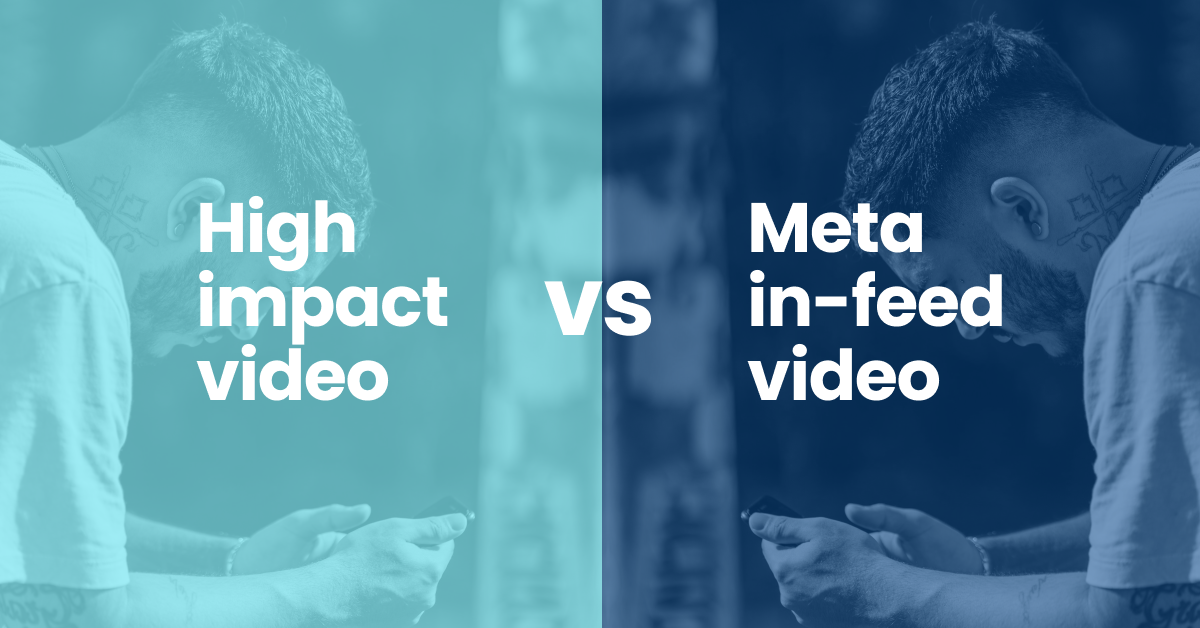
This case study reviews three campaigns from major brands in the food and beverage category, all of which ran within the last year, comparing how the same video creatives performed on mobile across Meta’s in-feed video formats and Adnami’s high impact video formats on the open internet.
The objective was to understand how well Meta’s in-feed video perform through the lens of attention. To do this, we applied two complementary methods: a CPCV3 analysis, measuring the cost per 3-second view completion, and the Sonar attention model, which was applied to Meta ads to create a cross-platform metric enabling a 1:1 benchmark against other display and high impact video formats.
While Meta in-feed video drives quick views at a lower CPM, 3-second views and attention drop off rapidly. As a result, when evaluating performance on mobile based on CPCV3 or Attentive Cost per Mille (aCPM), Meta in-feed video is more expensive and less effective. Adnami’s high impact video formats sustain viewer engagement for significantly longer, delivering stronger quality views, higher attention, and far greater cost efficiency overall.
6x
Longer average TiV
7.6x
Higher 3-second view rate
78%
Cheaper CPCV3
87%
Cheaper aCPM
Brand 1 campaign
Adnami is more cost-effective than Meta both in 3-second views and attention with:
- 75% cheaper CPCV3
- 87% cheaper aCPM
- 6.5× higher 3-second view rate
- 7× longer average time in view
- 28x higher 50% VTR
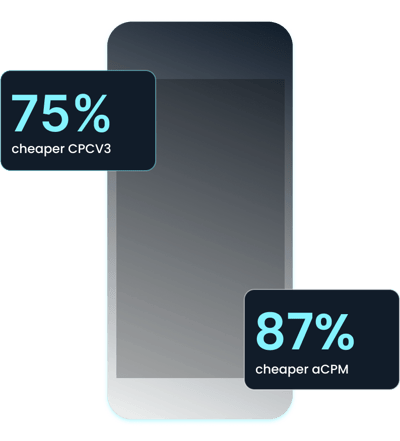
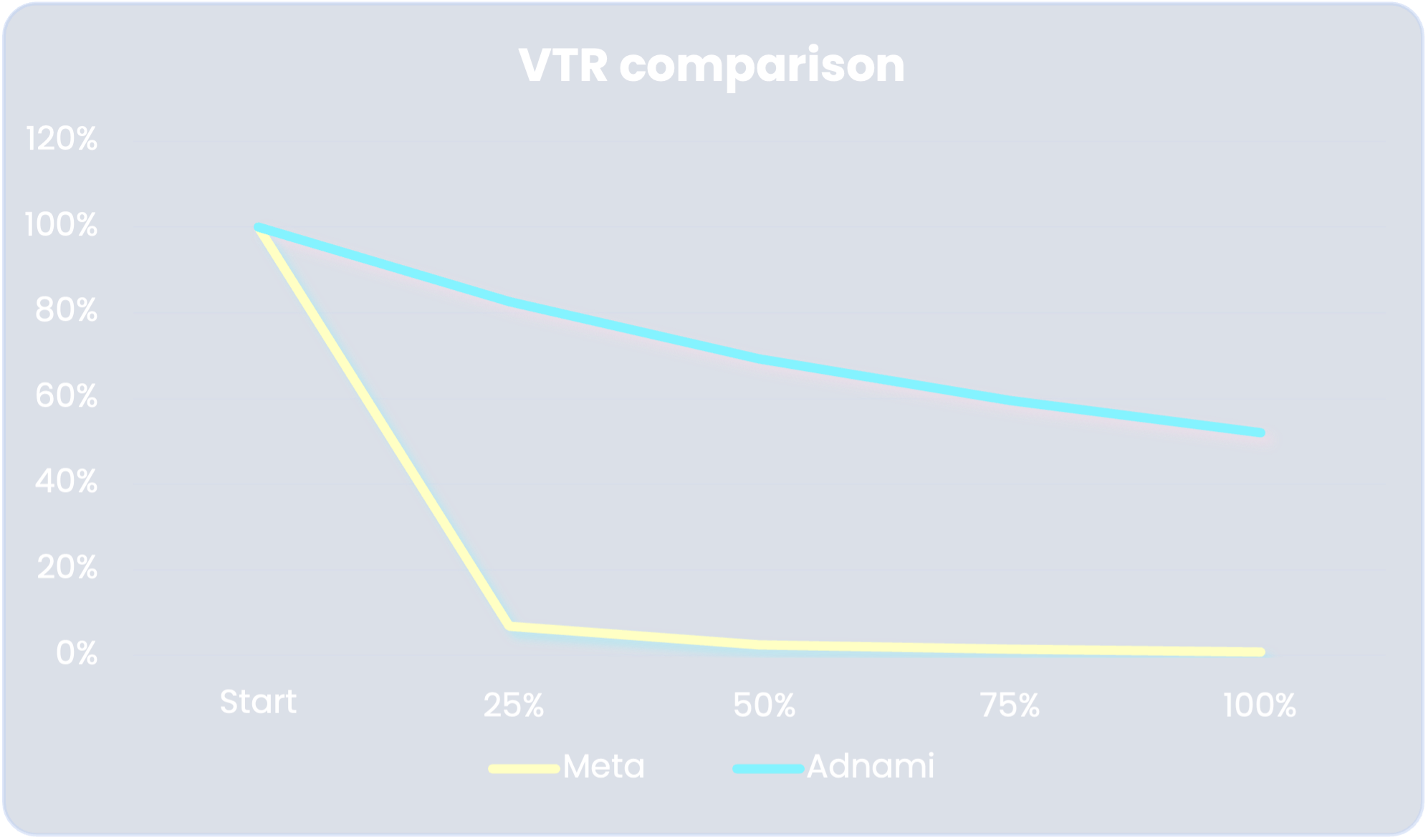
VTR comparison
Adnami’s mobile high impact video formats maintain viewer attention at a much higher rate throughout, while the view-through rate for Meta's mobile in-feed video drops sharply after the first few seconds.
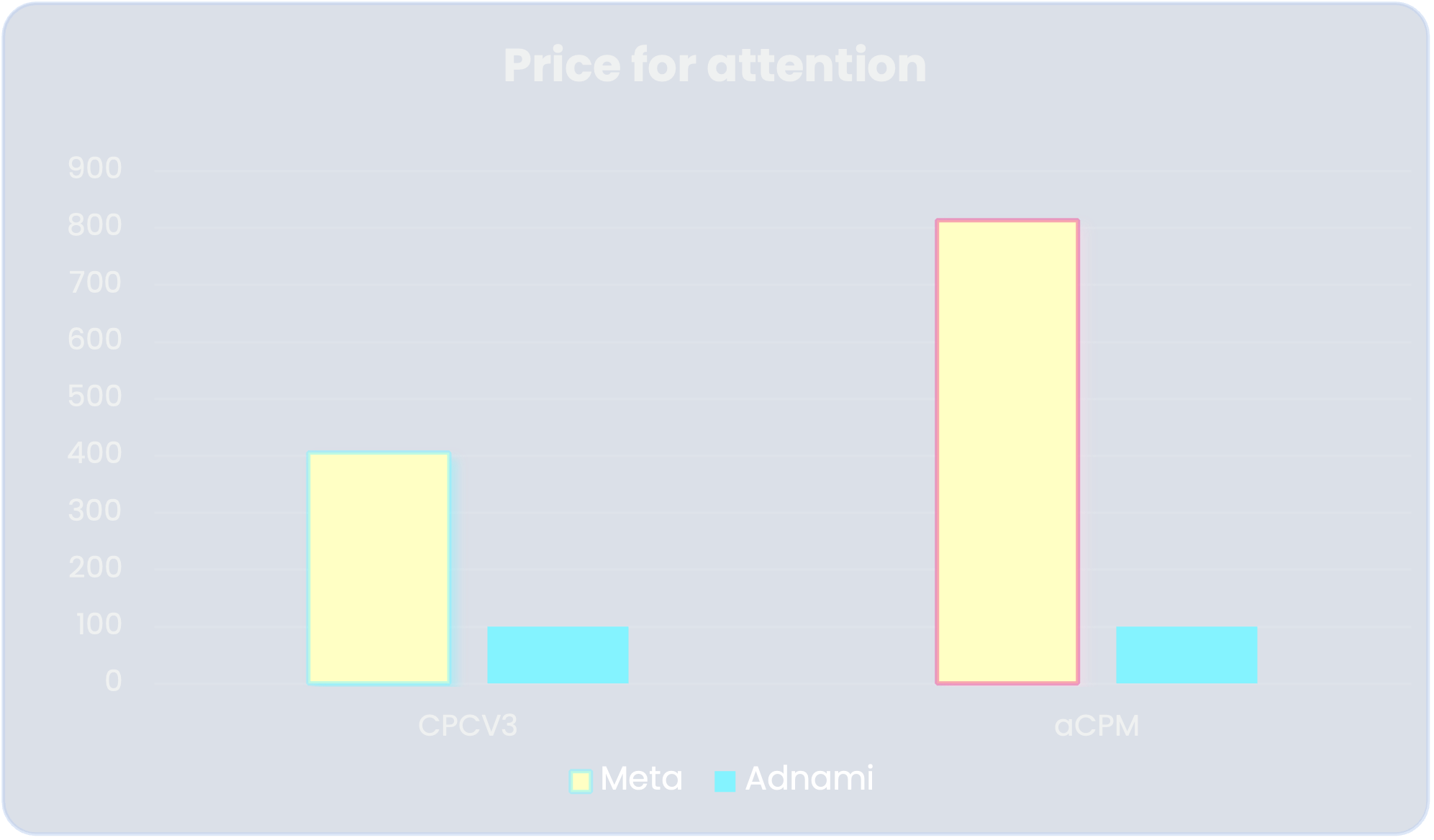
Price for attention
Higher CPCV3 and aCPM for Meta's mobile in-feed video show it costs more to achieve quality views (3-second views) and attention, while Adnami’s mobile high impact video formats deliver both more efficiently.
Brand 2 campaign
Adnami is more cost-effective than Meta, delivering stronger quality views (3-second views) and attention at a lower cost:
- 82% cheaper CPCV3
- 88% cheaper aCPM
- 8.5× higher 3-second view rate
- 7× longer average time in view
- 20x higher 75% VTR
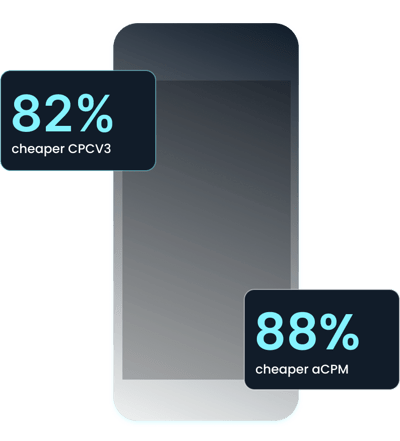
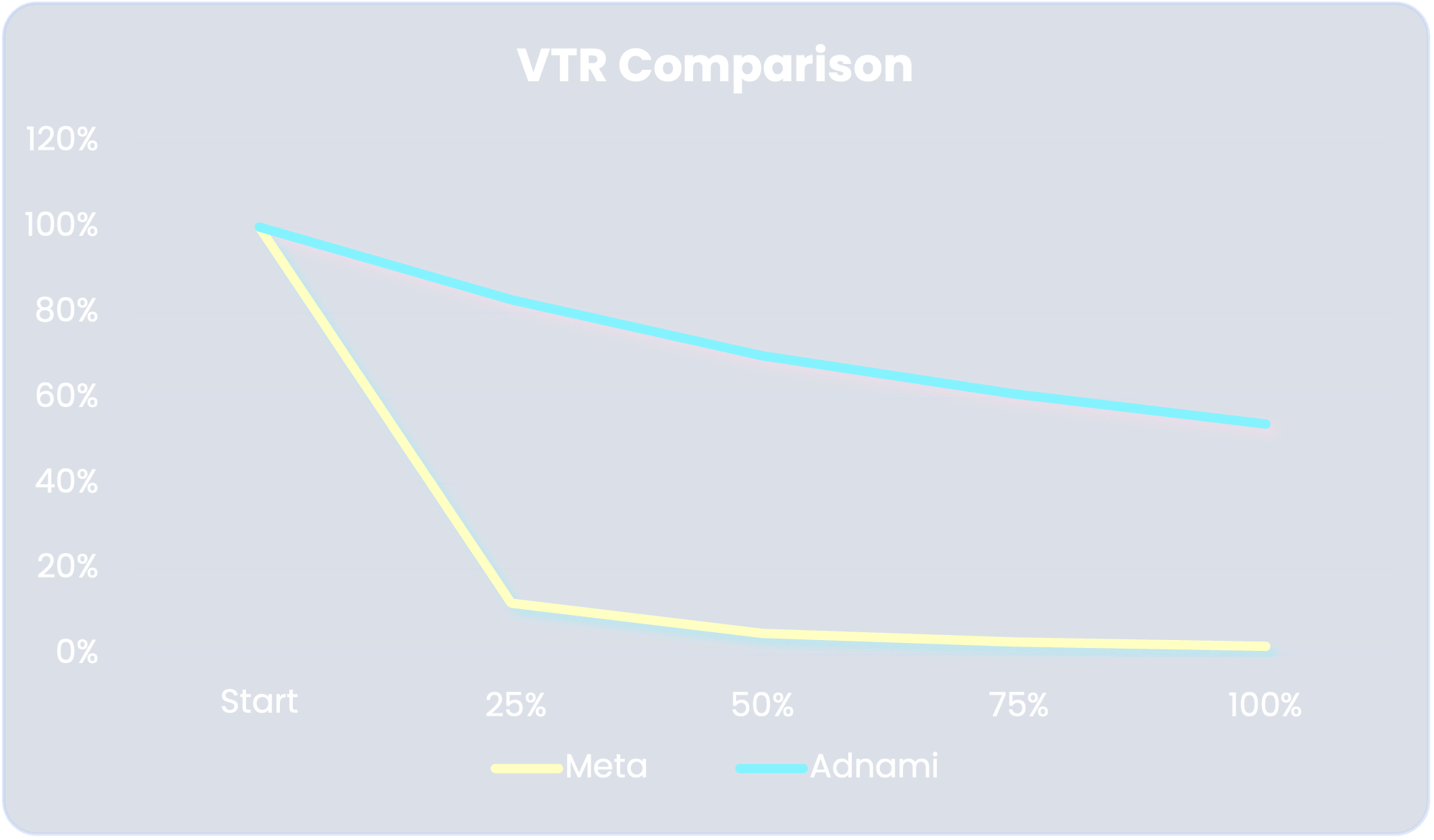
VTR comparison
Adnami’s mobile high impact video formats maintain stronger viewer retention across the full video, while the view-through rate for Meta's mobile in-feed video drops steeply after the first few seconds.
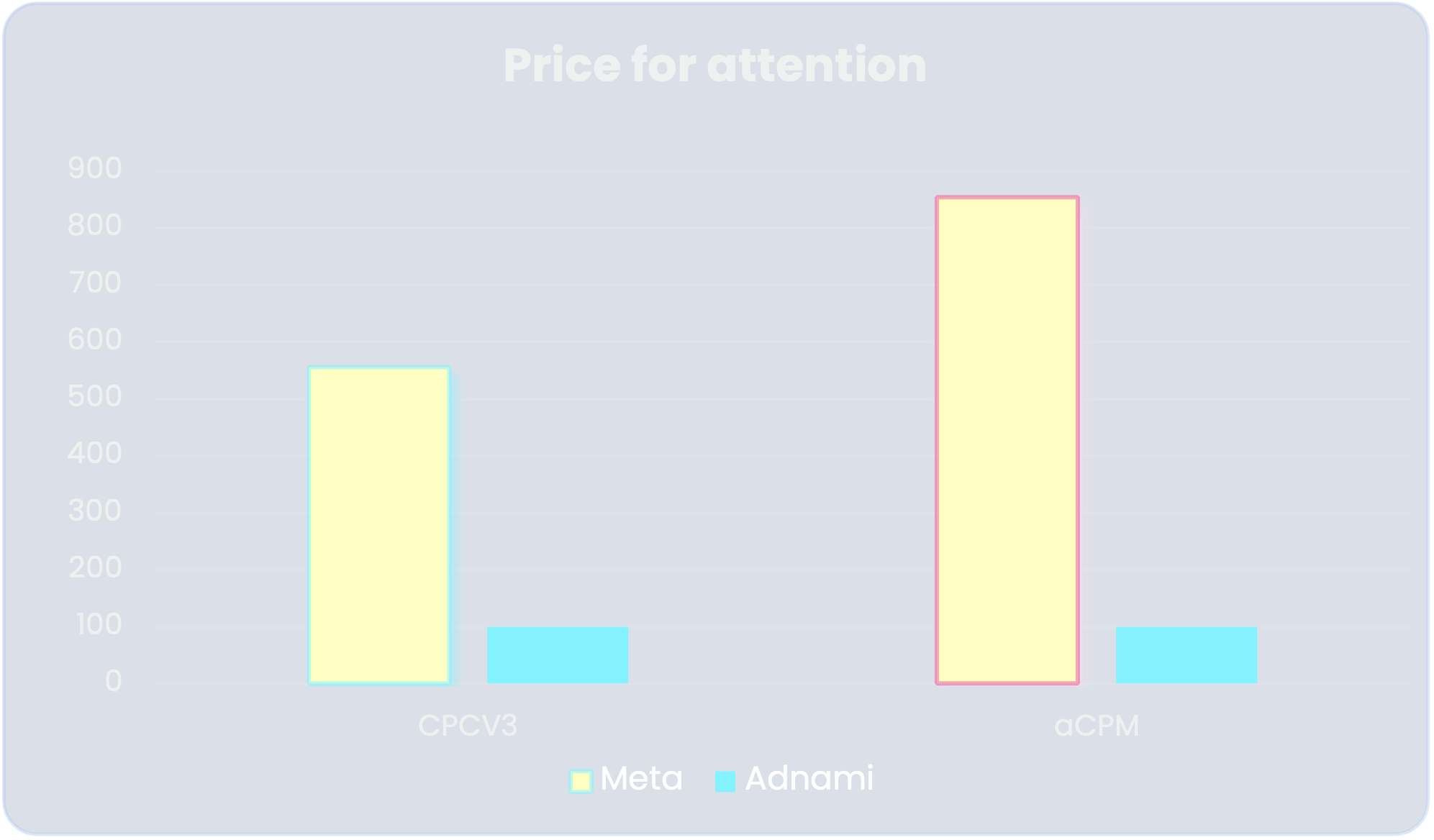
Price for attention
Although Meta’s mobile in-feed video CPM appears lower, its higher CPCV3 and aCPM reveal the opposite, it’s more expensive to deliver quality views and attention compared to Adnami’s mobile high impact video formats.
Brand 3 campaign
As with brands 1 and 2, brand 3 also experienced much better results with Adnami's high impact ads. Adnami proved to be more cost-effective than Meta, driving higher 3-second views and attention more effectively:
- 74% cheaper CPCV3
- 84% cheaper aCPM
- 7.9× higher 3-second view rate
- 7× longer average time in view
- 11x higher 50% VTR
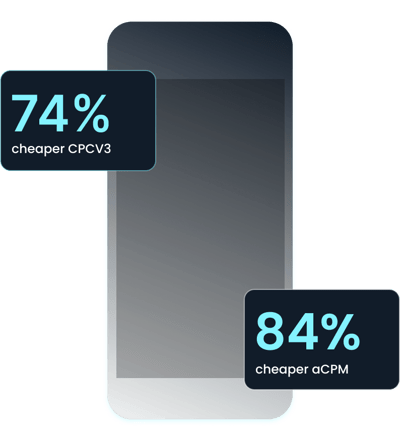
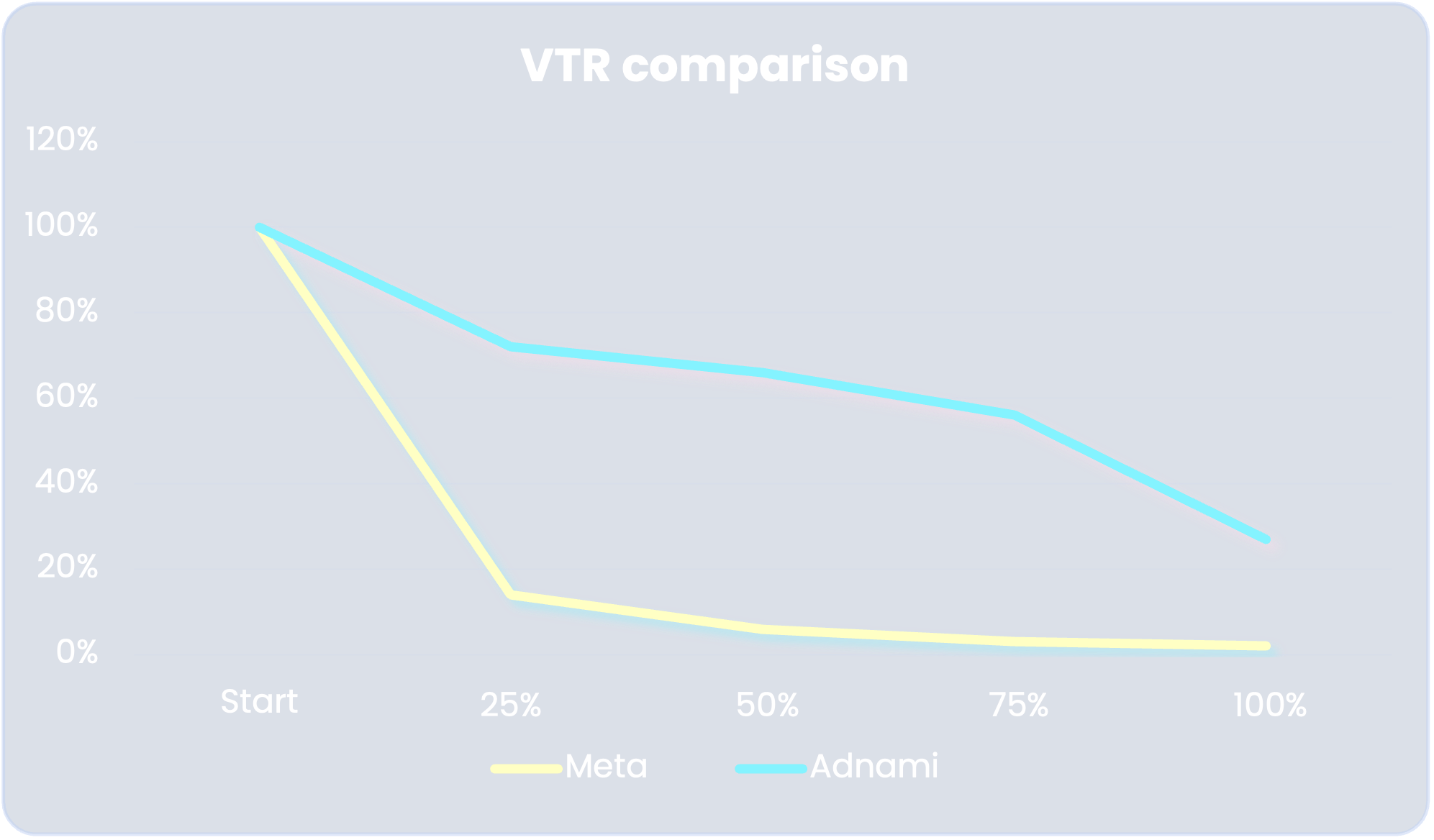
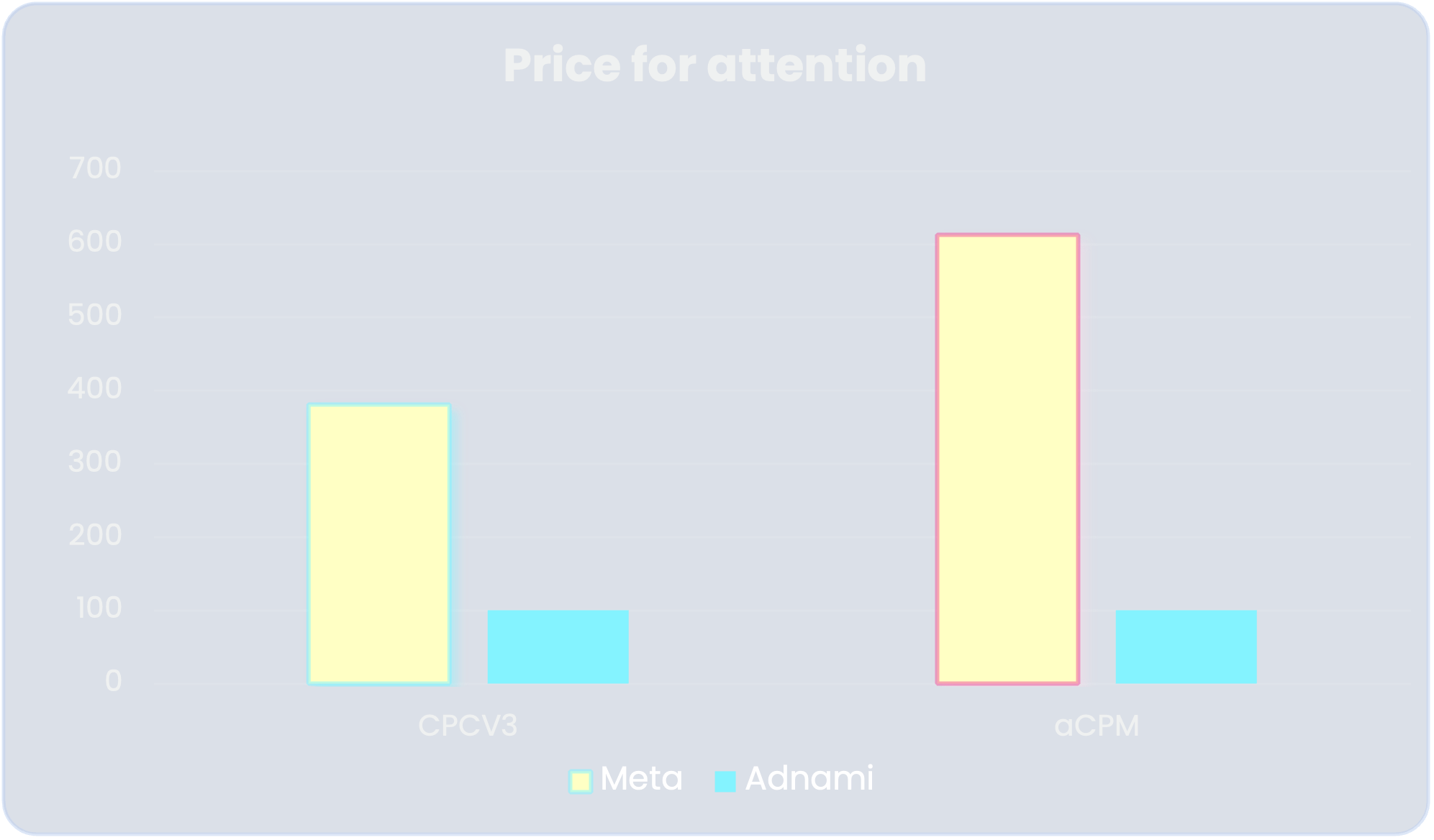
VTR comparison
Adnami’s mobile high impact video formats maintain stronger viewer retention across the full video, while the view-through rate for Meta's mobile in-feed video drops steeply after the first few seconds.
Price for attention
Higher CPCV3 and aCPM on Meta's mobile in-feed video show it costs advertisers more to achieve quality views (3-second views) and attention, while Adnami's mobile high impact video formats deliver stronger outcomes at a lower cost.
Social platforms are designed for speed with endless feeds, infinite content, and constant scrolling. It’s an environment optimised for consumption, not consideration. While this behaviour drives volume, it often comes at the expense of quality and attention.
Across all three mobile video campaigns, we observed the same pattern. Meta's in-feed video generated quick, low-quality views, while Adnami’s high impact video formats generated higher 3-second view rates and VTRs, sustaining attention for much longer.
The takeaway is simple, doomscrolling isn’t a great place for brand attention. At first glance, Meta in-feed video may appear cheaper, but when quality and attention are considered (CPCV3 and aCPM), it’s actually the more expensive option. Adnami’s high impact video formats consistently delivered more effective and impactful attention outcomes at a comparatively lower price, proving that cheaper impressions don’t always mean better value.
Curious how your Meta video formats stack up against high impact video campaigns on the open web? Let’s talk and see how they compare on attention, quality views, and cost efficiency.